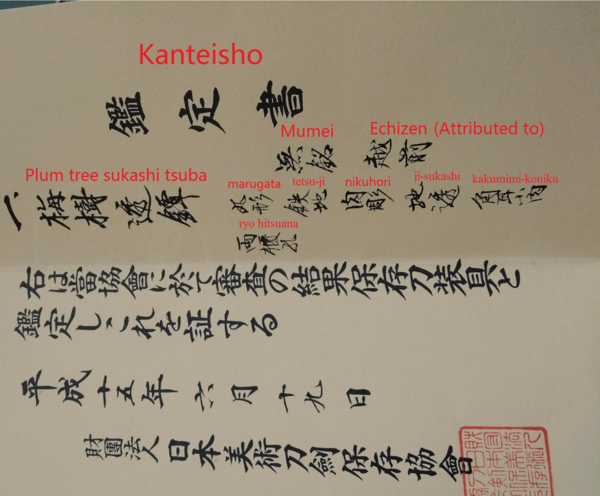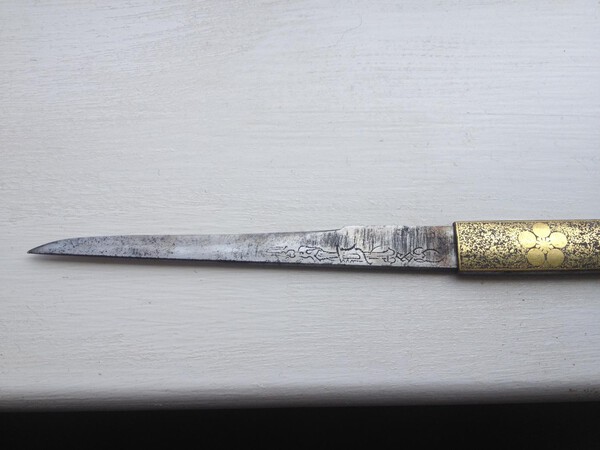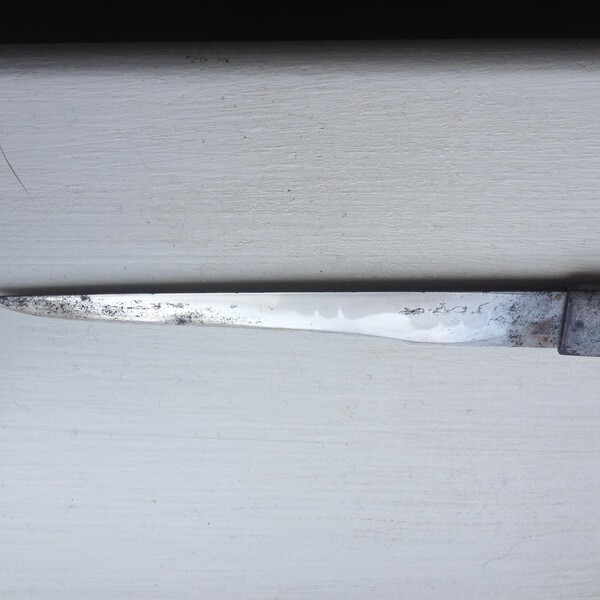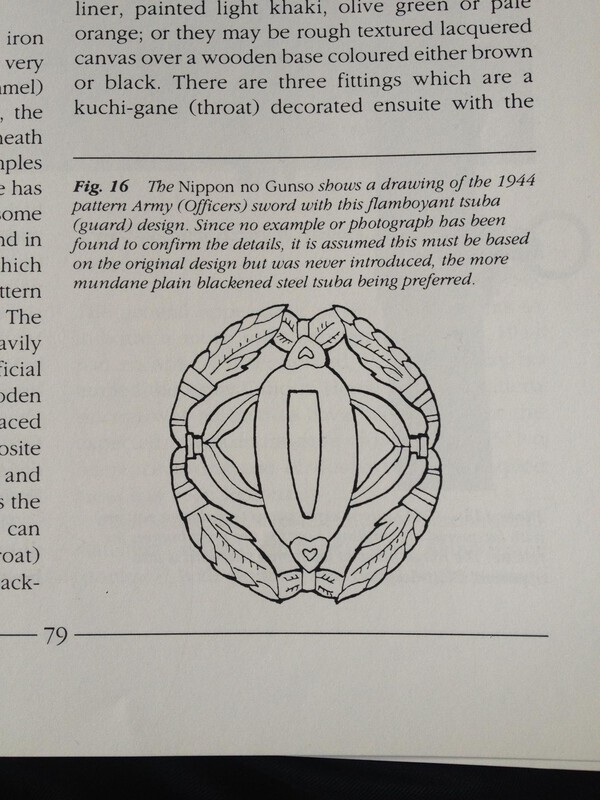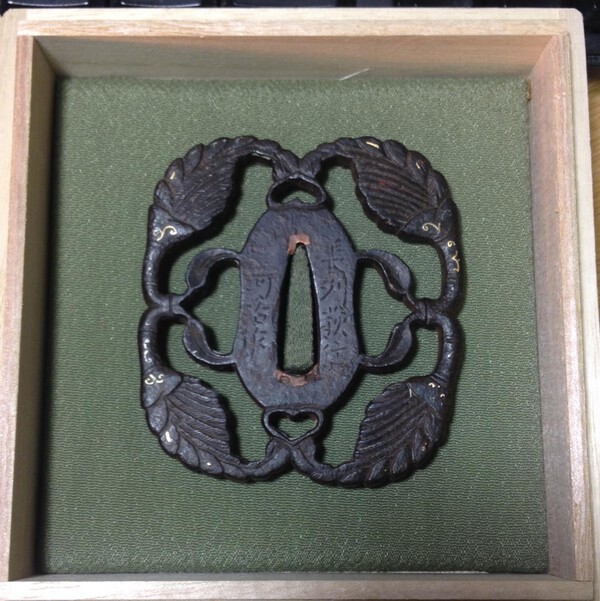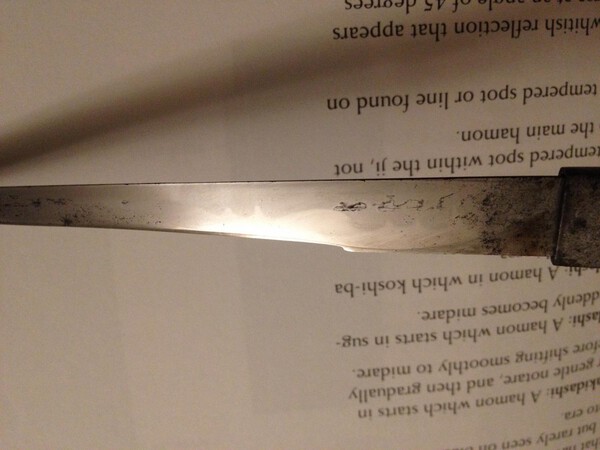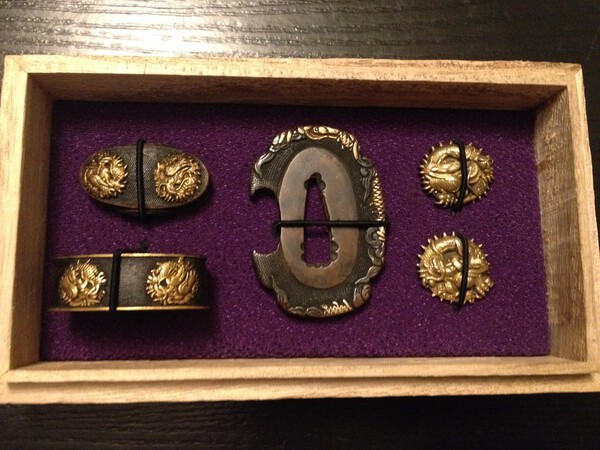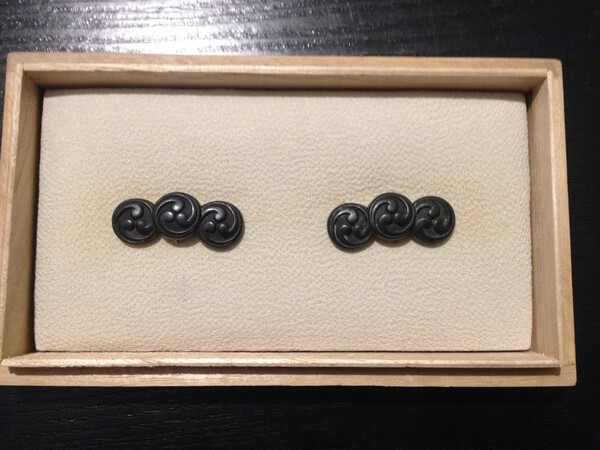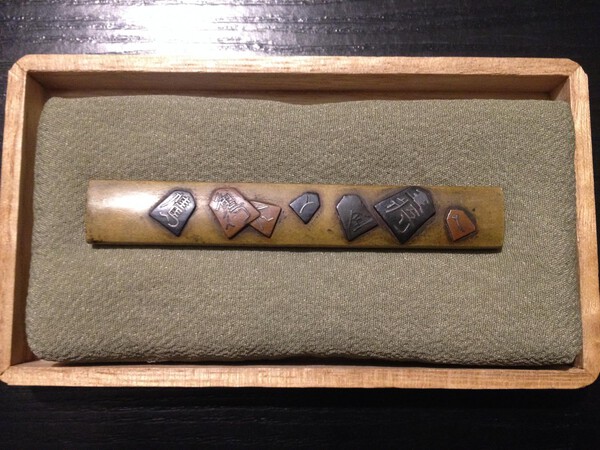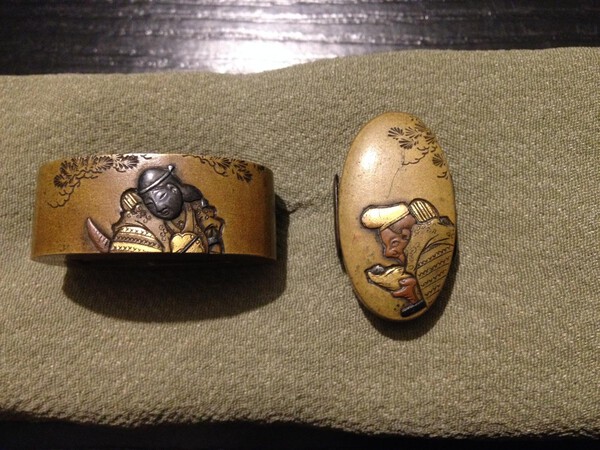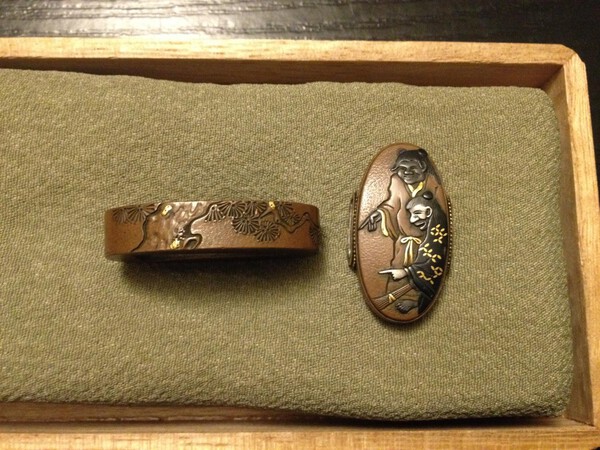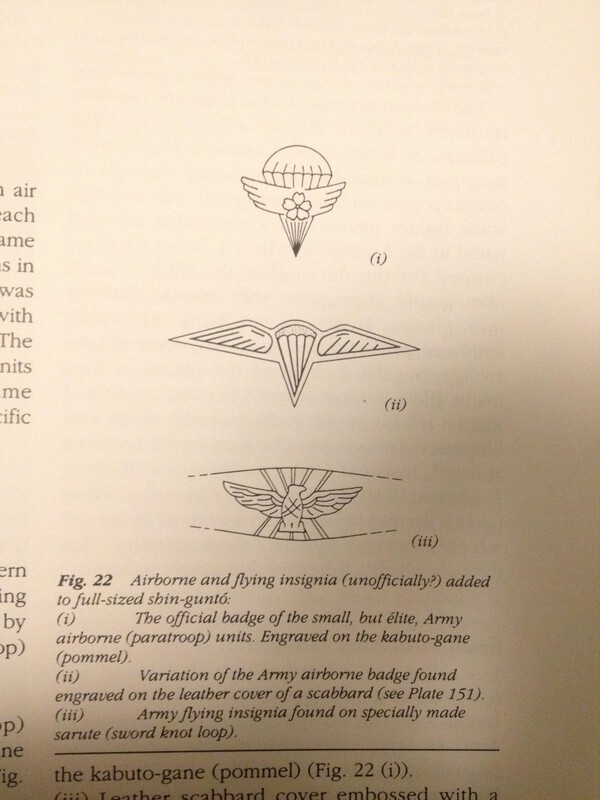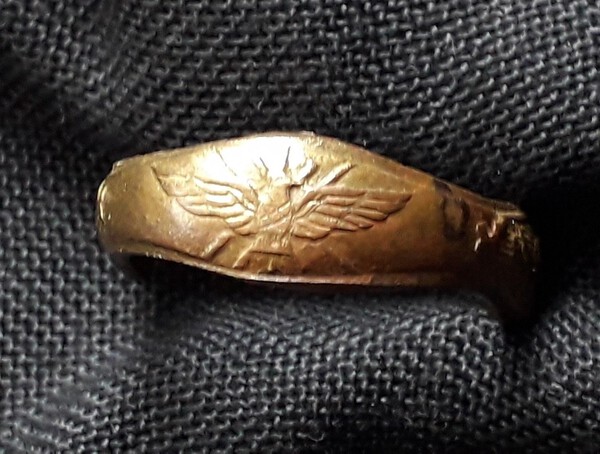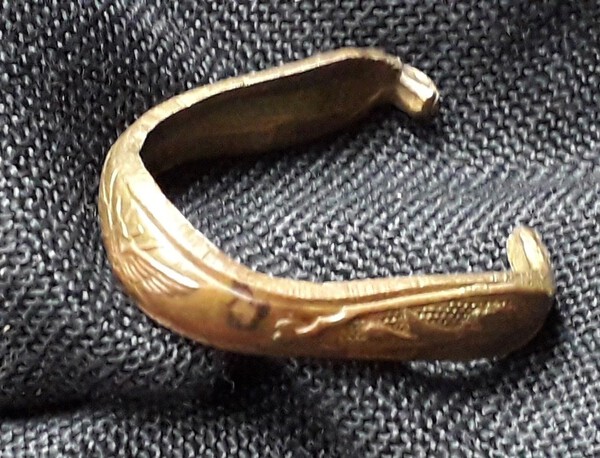-
Posts
561 -
Joined
-
Last visited
-
Days Won
4
Content Type
Profiles
Forums
Events
Store
Downloads
Gallery
Everything posted by kyushukairu
-
Hello Daniel, If you were not previously aware, your sword is signed 'Noshu ju Kojima Katsumasa' (濃州住小島勝正作)
-
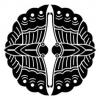
Please Identify The Sword Gunto Ww2
kyushukairu replied to antiquegallery's topic in Military Swords of Japan
The stamp below the star is the 'Gifu' stamp, which displays the first character of Gifu (岐). On the reverse is the date '10th Month (October) 19th year of Showa (1944)' (昭和十九年十月) and above that is the seki stamp (関). -
Hello Daniel, the two stamps on your blade (the four circles and the arrow) denote that this bayonet was made by Matsushita Kinzoku KK Arsenal (National Denki). See here: http://antiqueoutings.com/wp-content/uploads/2013/03/Japanese-Markings.jpg
-

Kinko Tosogu (Fuchigashira, Menuki, Kozuka, Tanto Set)
kyushukairu replied to kyushukairu's topic in For Sale or Trade
Nara, sentoku fuchigashira, sentoku kozuka, and mitsudome kamon menuki still available -
Hello Sergei, the first one looks like sen/thousand (千) and Jo-?-ho (乗?保) for the smith, though I can't quite make out the middle kanji
-
-
Thanks for the comments, chaps. I've tried to take a better photo, but it's not much of an improvement on the previous one. I don't think it's toran-ba, but just the lack of clarity in the photo. Where it looks like tama is just where the hamon turns back on itself It's not signed, though there is the remnants of a ken horimono on the other side
-
Hello Michael, the last character is definitely 彫 'carved (by)' and the penultimate character looks to be 民 which is probably the last character of the artist's name
-

Kinko Tosogu (Fuchigashira, Menuki, Kozuka, Tanto Set)
kyushukairu replied to kyushukairu's topic in For Sale or Trade
Mino-Goto tanto set sold offiline -
Very nice, Edward. However, rather than the mei, I would look at the blade itself. In the photo showing the hamon there looks to be a bit of ware which would suggest that it's not the work of a master smith, though it's difficult to tell from a photo alone. You should compare this blade with the other Nagamitsu you own. As for the mei, there's a similar example on the Japanese sword index - https://www.japaneseswordindex.com/naga.htm - see example 'T'. It's suggested that the three stroke 'Naga' was done by one of his students or an apprentice. With regards to the claim that 'due to the volume of NAGAMITSU blades out there he could not have made them all himself', I'd like to see some statistics to support this. How many blades are we talking about exactly? There are records of Yasukuni-tosho making well over one thousand - Yasunori, for example is said to have made 1600 swords at Yasukuni.
-
I recently listed a few iron tsuba for sale, and whilst flicking through Fuller and Gregory's Japanese Military and Civil Swords and Dirks, recognised one of the tsuba I had put up for sale. Apparently the image depicted in F&G was designed for the type 3/ 1944 gunto, though no known examples exist. I'm not suggesting my tsuba was made for a gunto, as it's clearly Edo era, though thought some others may appreciate the coincidence
-
Any thoughts on this kogatana's hamon? I had initially thought it was Fuji san, but then realised I was looking at it upside down
-
Hello Johni, whilst the bamboo styled rim has been seen on Bushu tsuba, and the geese in flight is commonly portrayed on Akasaka work, there are no particular characteristics which stand out as indicative of any one school. Moreover, because it exhibits a mixed range of characteristics, in my opinion, this piece is most likely mid/late Edo and it would paper to Shoami school
-
You are very welcome, Neil
-
Hello Neil, the preceding characters appear as Noshu ju Osawa (濃刕住大澤). The kokuin just says 'Kanehisa' (兼久).
-

Kinko Tosogu (Fuchigashira, Menuki, Kozuka, Tanto Set)
kyushukairu replied to kyushukairu's topic in For Sale or Trade
Kanzan and Jittoku fuchigashira now sold! -
I have a couple of very good quality kinko tosogu sets for sale. Please enquire for further images or information. Donation will be made to the board Nara school, copper fuchigashira: Kanzan and Jittoku themed - SOLD! Nara school, sentoku fuchigashira: Empress Jingu themed - £280 Nara school, sentoku kozuka: shogi-themed - £240 Yoshioka school, shakudo, nanako menuki: mitsudome kamon - £260 Mino-Goto school tanto set (fuchigashira, tsuba, menuki) dragon themed - £550 Kind regards, Kyle
-
I can't make out the first couple of characters, but the smith's first name was Masanobu and he was a resident in Mito (??正信/ 水戸住)
-
Some really interesting discussion here gents! Thank you, Bruce. At a side-by-side comparison, they do look very similar. However, I suppose that published in Dawson's book could also be a copy added to increase the price of a standard gunto
-
Here's the original listing, Chris. https://www.ebay.co.uk/itm/Japanese-PARATROOPER-GUNTO-SARUTE-/162924777098?item=162924777098&ssPageName=ADME%3AL%3ACOSI%3AGB%3A1123&ViewItem=&nma=true&si=Mb1a%252ByU7dDLUw9eWbgd7%252FIe4UxQ%253D&orig_cvip=true&rt=nc&_trksid=p2047675.l2557
-
Thanks Mike, would you mind uploading a picture from the book please? That's a good point about fraying the tassel, Paul. As for the 'roughness' could it be a late war production, or even ersatz, which airborne soldiers had commissioned?
-
Thanks, Chris. I had a quick search on google and couldn't find any other examples. Does anyone who has Dawson's Swords of Imperial Japan 1868 – 1945: Cyclopedia Edition know if there is any mention of airborne sarute there?
-
I recently seen a sarute advertised as 'airborne', and was wondering whether anyone else has encountered one of these before? Fuller and Gregory make reference to the existence of a 'specially-made' airborne sarute, and include an artistic rendering which matches the image of the sarute in question, though can anyone attest to its authenticity?
-
These were offer for sale by a dealer in France who claimed they were made during Showa. The original listing is still on his webpage: http://nihontofrance.com/tosogu-2/snakes-menuki/?lang=en



